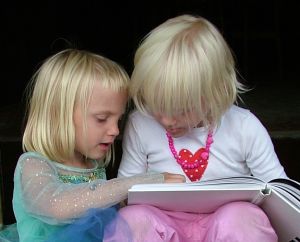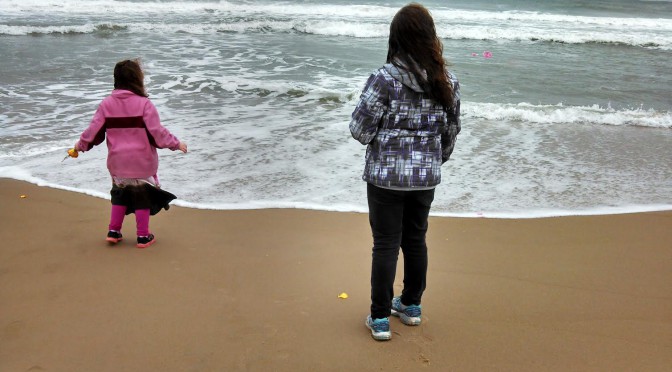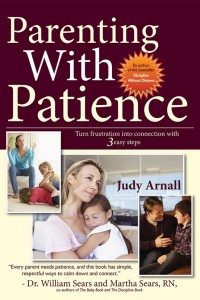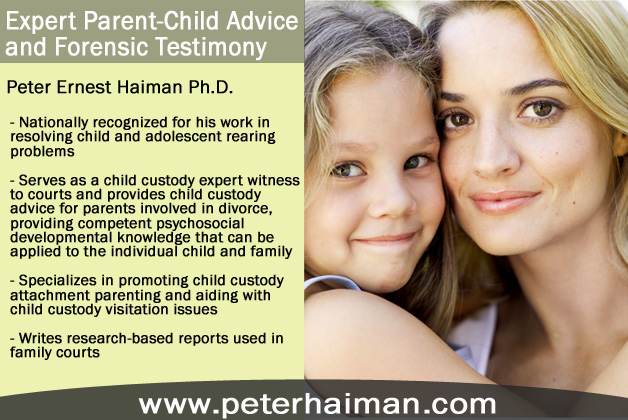The importance of a secure parent-child attachment is not a new revelation: This is what sets the foundation for all future relationships a child will have in his or her life. But there is also something to be said for security between siblings. A connected relationship between brothers and sisters also provides a foundational context: It is an opportunity to develop the groundwork for peer relationships in a child’s life.
Kelly Bartlett, CPDE, lives in Portland, Oregon, USA, with her two children and husband, where she is an API Leader with Portland API.
She is also a Certified Positive Discipline Educator, a freelance parenting writer and the author of Encouraging Words for Kids.
Dr. Gordon Neufeld, clinical psychologist and co-author of Hold On To Your Kids, has devoted his life’s work to studying attachment and to helping parents and children resolve relationship struggles. According to Dr. Neufeld, there are 6 Stages of Attachment: six levels of development that a relationship must go through before the participants have reached secure attachment. These stages start simply and build consecutively to deepen the level of attachment over time. To successfully navigate all six stages is to develop a secure relationship. Just as parents and children go through these stages of attachment, so do siblings.
Helping children develop a security with each other goes beyond mediating arguments and preventing sibling rivalry. It’s about fostering security between your children and strengthening their relationship. It’s helping siblings find attachment with each other.
Here are Dr. Neufeld’s 6 Stages of Attachment as they apply to sibling relationships and some ways you can help children navigate each one:
1. Being With
The most basic level of attachment between siblings is simply about engaging positively together. Their relationship begins as soon as they meet one another other, and it continues every time they talk, laugh, play, smile, hug, swordfight, collaborate or put on plays in the living room.
These behaviors engage the senses and connect siblings on a basic level. When children are getting along and playing happily, it is important to let them continue for as long as possible. This means that parents shouldn’t interrupt, comment or join in, but just let them have that enjoyable time together for as long as it will last.
“I have delayed dinnertime, cancelled playdates, even occasionally rescheduled my daughter’s music lesson, because my kids were playing so well together, and I just wanted it to last!” said Amy Jackson, a mom of two in New York, USA. When you can, make sacrifices for the sake of sibling camaraderie to maximize those
opportunities for positive interaction. It is absolutely essential to their long-term relationship.
Though, as any parent of multiple children knows, sibling interactions are not always positive. Conflicts are still interactions that can help bring children closer together, and it’s not always
necessary for a parent to intervene. When kids resolve their own disagreements, their relationship becomes stronger, as they must learn to communicate with each other. As long as a conflict between children is minor, let them have the opportunity to work it out themselves. Don’t step in right away. This will give kids a chance to express themselves with each other and establish their baseline of communication.
Letting children resolve their own conflicts won’t be possible all of the time, especially in the early years. It’s always necessary to step in and mediate when conflicts escalate in intensity or physical or verbal violence is involved. Young children’s brains are immature, and they do not yet have the neural connections needed to effectively communicate when their emotions run strong. Kids’ lack of impulse control may lead to actions and interactions that aren’t conducive to sibling attachment.
Learn more about “What Happens to the Brain When We ‘Lose It'” by API Leader Kelly Bartlett and ideas to work through sibling conflict with “New Sibling, New Behavior! How to Respond When Children Act Out” by API Leader Kelly Bartlet, “The Dead Balloon: Resolving Sibling Rivalry” by parent educator Shoshana Hayman and “Sibling rivalry is natural” by API Reads coordinator and API Leader Stephanie Petters
Modeling Nonviolent Communication and facilitating their problem solving will teach children the communication skills they need solve difficulties with their brother or sister while still maintaining the relationship.
Learn more about Nonviolent Communication (NVC) in Attachment Parenting with “Practicing NVC” by API Leader Kelly Bartlett, “Using NVC in the Family” and “Speaking Peace” by API cofounder Barbara Nicholson and Lysa Parker, or get in-depth with this $9 API Teleseminar with NVC instructor Ingrid Bauer, “API + NVC = Growing Your Peaceful Family.”
It is also important to ensure that family time is a priority. As often as you can, get the whole family together for meals, games, outings, bike rides or other activities that are fun for everyone. The support and companionship of everyone together will assist the development of children’s relationships: They’ll engage positively with each other within the context of the whole family and have shared enjoyable experiences together.
2. Being Like
The next level of attachment, beyond simply interacting together, is knowing how someone is the same. Realizing what you have in common with another person takes connection a step further.
They may not realize it, but siblings have commonalities. No matter how opposite your children may seem, they at least have you in common!
Beyond that, there are most likely other similarities they share, and it’s important for them to realize what they are. Are there hobbies they both enjoy? Characters they like? Interests they share? What do they both dislike? Find those things that they have in common and help your children bond over them. Have conversations over dinner about their favorite TV shows. Ask them questions, or have them teach you about the things they like to do together. Engage kids in their shared interests as often as possible.
3. Being Together
From regular, positive interactions and the realization of their similar interests, children start to develop a sense of loyalty toward each other and a feeling of belonging. With their siblings, kids feel a sense of “we’re a team, we work together, we’re in the same boat.”
This stage of attachment comes about naturally after years of living together, resolving disagreements, supporting one another, communicating regularly, enjoying each others’ company and working cooperatively, so it’s important to prioritize those first stages of attachment.
In addition to facilitating positive interactions and focusing on kids’ commonalities, you can also provide plenty of opportunities for your kids to work as a team.
Gina Osher, a mom of 5-year-old boy-girl twins in California, USA, said that she give her kids plenty of opportunities to communicate and work together through games: “We occasionally do ‘sibling
night’ in which the kids get to make all of the decisions for the evening. It’s good practice for them to have to work together, and it’s fun for them to tell Mommy what to do as a team.”
Regular games in which siblings work together like this are a great way to further their sense of fellowship toward each other, to feel that perspective of “we are together in this.”
4. Being Significant
At this level of attachment, a child feels significant to his sibling. There’s a sense between the two of them that, not only are they a team, but they also matter to one another. They’re significant in the family, they’re significant to their parents and they realize they’re significant to their siblings.
Significance develops when a child stands up for a sibling at school or when one shows a gesture of kindness to the other. It occurs when siblings support each other in their activities by attending each other’s basketball games or dance performances. It’s waving “hi” to a sister from across the cafeteria at school, helping to take care of a brother when he’s sick and it’s making sure a sibling is included in a game with peers. These kinds of gestures communicate “you matter to me.”
5. Being Loved
Though it doesn’t happen right away, with the development of a relationship over time comes the knowledge between siblings that they are loved by each other.
The bond between them deepens when they no longer need prompting to behave in loving ways but when gestures of affection come from the heart. These might be expressions of genuine apology, offering comfort during a hurtful moment, a hug during a joyous one or deep concern for the other’s emotions.
After years of growing into a connected relationship together, siblings’ gestures toward each other begin to show unprompted love, and they will move into the last stage of attachment.
6. Being Known
At this point in the relationship, a child feels trust, significance, love, commonality and a sense of belonging. They feel close enough to a sibling to divulge deeply personal information. They want to tell their sibling everything about themselves as they share their secrets, fears, emotions, hopes and dreams. At this stage of attachment, siblings are able to communicate intensely and find support in their love. They truly hear one another.
Genuine sibling attachment is more than just getting along, it is about being known to each other. It takes time, perhaps even into adulthood, to develop the deeper levels of attachment between
brothers and sisters. The most important thing to do to facilitate this relationship when children are young is to foster those beginning stages by:
- Creating opportunities throughout childhood for siblings to relate and engage in a consistently positive way;
- Helping them see what they have in common;
- Creating opportunities for them to work together.
These kinds of interactions create a foundation for early attachment, and the deeper levels will naturally unfold with time.











